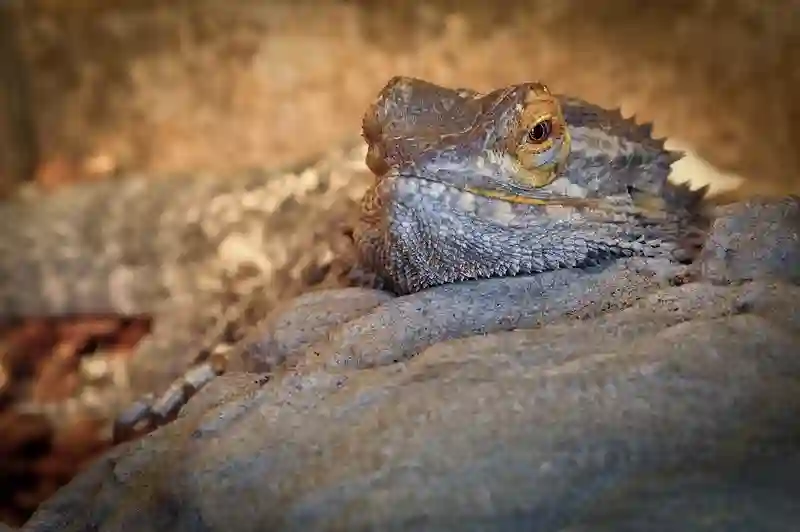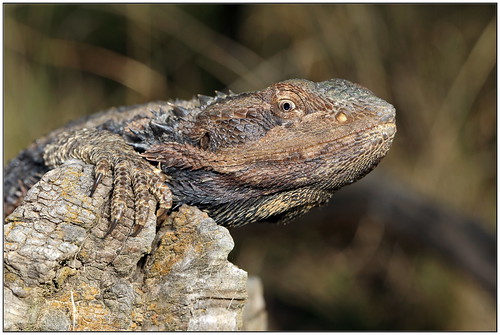Bearded dragons sometimes shed on their noses, which can cause a grey patch to appear on their nose. An injury or stress could also cause their nose to turn gray. However, the presence of a gray nose should not be taken lightly as it may indicate serious health problems such as respiratory infection, fungal infection, mouth rot, or tissue death.
Overview of the Topic: Why Is My Bearded Dragons Nose Grey?
Bearded dragons use their nose as part of their respiratory system when breathing. A healthy bearded dragon’s nose should be bright pink or reddish-pink in color depending on the specific species.
However, if you notice that your bearded dragon has grey discoloration around its nostrils or even covering its entire snout area, it could potentially indicate an underlying health issue that needs attention.
In this article, we will explore some common reasons why a bearded dragon’s nose might turn grey and what you can do about it.
Common Causes of Grey Nose in Bearded Dragons
Respiratory infections
Respiratory infections are one of the most common causes of grey noses in bearded dragons. These infections usually occur due to poor living conditions, improper diet, or stress.
Symptoms of respiratory infections include wheezing, coughing, nasal discharge, and labored breathing. If you notice any of these signs in your pet, it is essential to take them to a veterinarian immediately for proper diagnosis and treatment.
Symptoms and signs to look out for:
- Wheezing
- Coughing
- Nasal discharge
- Labored breathing
Treatment options:
If diagnosed early enough, respiratory infections can be treated with antibiotics prescribed by a veterinarian. Most often, you will need to provide a clean environment for your bearded dragon; this includes proper temperature control and humidity levels.
Dehydration
Dehydration is another prevalent cause of grey noses in bearded dragons. A dehydrated bearded dragon’s nose may become discolored due to a lack of moisture. Dehydration can also lead to other health problems such as poor appetite and lethargy.
How it affects the nose color:
Dehydrated bearded dragons will have dry skin and sunken eyes. Their noses may become pale or grey due to the lack of moisture in their bodies.
Tips on how to prevent dehydration in bearded dragons:
To prevent dehydration, ensure that your pet has access to clean water at all times. You may also mist their enclosure with water once or twice a day or provide them with a shallow dish of water for soaking if needed. It is also essential to monitor the temperature and humidity levels inside their enclosure as extreme temperatures or low humidity can lead to dehydration.
Uncommon Causes of Grey Nose in Bearded Dragons
Mouth rot or stomatitis
Mouth rot, also known as stomatitis, is a bacterial infection that affects the mouth and gums of bearded dragons. It is caused by poor oral hygiene, inadequate diet, and compromised immune systems.
The early symptoms of mouth rot in bearded dragons include swelling and redness around the mouth region. As the disease progresses, yellowish plaques begin to form on the gums and tongue.
In severe cases, the infection may cause ulceration of the tissues leading to secondary bacterial infections. Treatment for mouth rot involves cleaning and disinfecting the affected area followed by administering antibiotics.
Necrosis or Tissue Death
Necrosis or tissue death is a rare but serious condition that can occur in bearded dragons causing their nose to turn grey. It can be caused by underlying health conditions such as kidney failure or metabolic bone disease that compromise blood flow to certain areas of the body resulting in tissue death.
Necrosis can also occur due to external trauma such as burns or bites from other pets leading to blood vessel damage and tissue loss. Symptoms include a blackened appearance around the nose which develops into grey over time as cells die off completely.
Treatment options vary depending on its underlying cause but often require wound management and supportive care with antibiotics, pain medication or surgery if deemed appropriate.
In order to prevent these uncommon causes of grey nose in your bearded dragon it is important to maintain good hygiene practices such as regular cleaning of enclosures with safe disinfectants including hand washing before handling your pet will reduce any risk of bacterial infections developing.
Preventive Measures for Bearded Dragon Owners
Dietary considerations
A bearded dragon’s diet plays a significant role in its health and well-being. As a responsible pet owner, you must ensure that your bearded dragon is getting the right balance of nutrients. A healthy diet includes greens, fresh fruits, and vegetables.
Avoid feeding your pet with insects caught from outside because they may carry parasites or diseases that could harm your pet. Also, avoid overfeeding your bearded dragon with high protein diets like mealworms as it can cause kidney or liver damage.
Ensure that you provide a clean and stress-free environment for your pet to thrive in. Keep their terrarium clean by regularly cleaning out any leftover food scraps, feces, and other debris.
Check the temperature of their enclosure to make sure it is not too hot or too cold for them. You should also invest in an appropriate size enclosure to ensure they have enough space to move around.
Conclusion
Understanding why your bearded dragon’s nose is grey is crucial as it could be an indication of underlying health issues. While some causes of grey noses are more severe than others, none should be taken lightly as they all affect the overall well-being of your pet.
Be sure to seek professional help when necessary and take preventive measures to keep them healthy and happy.


